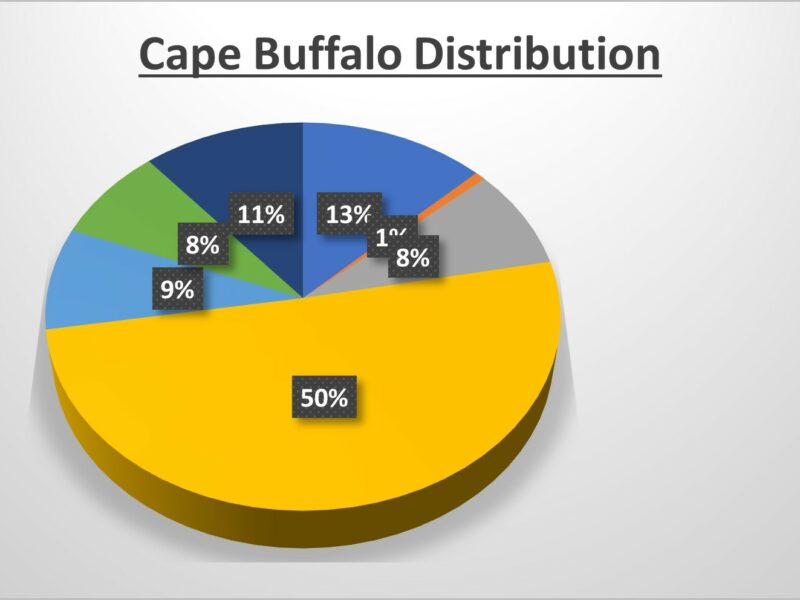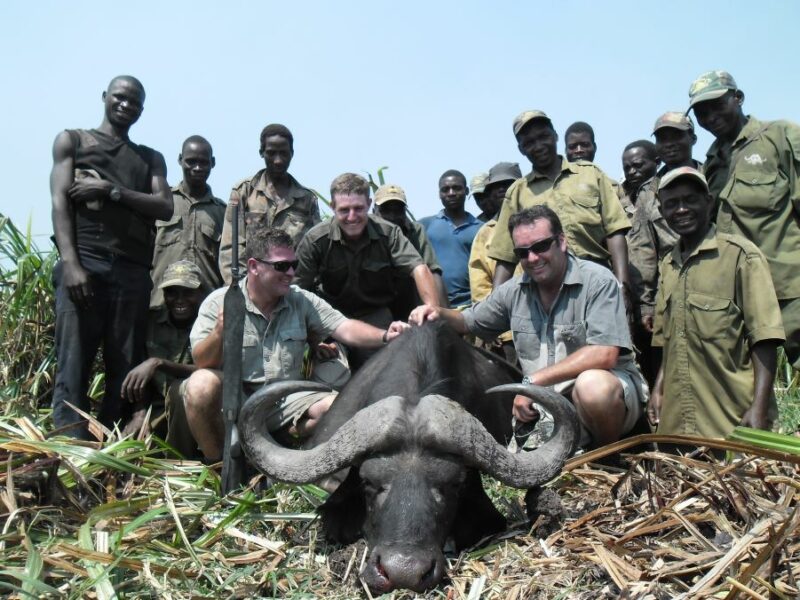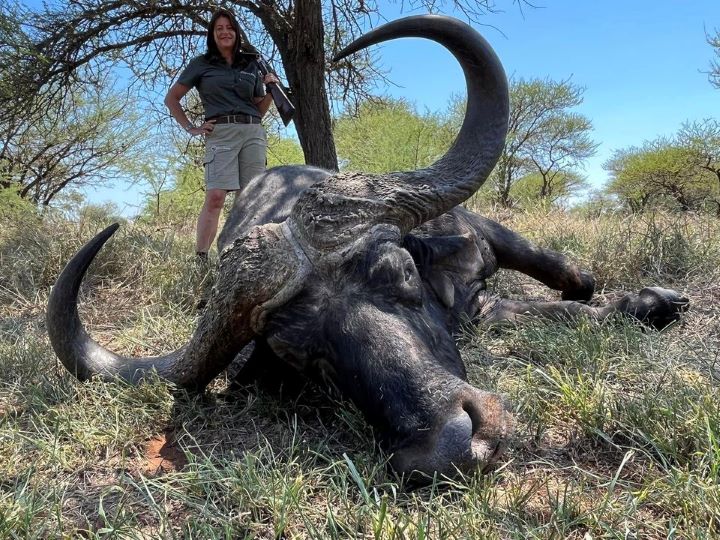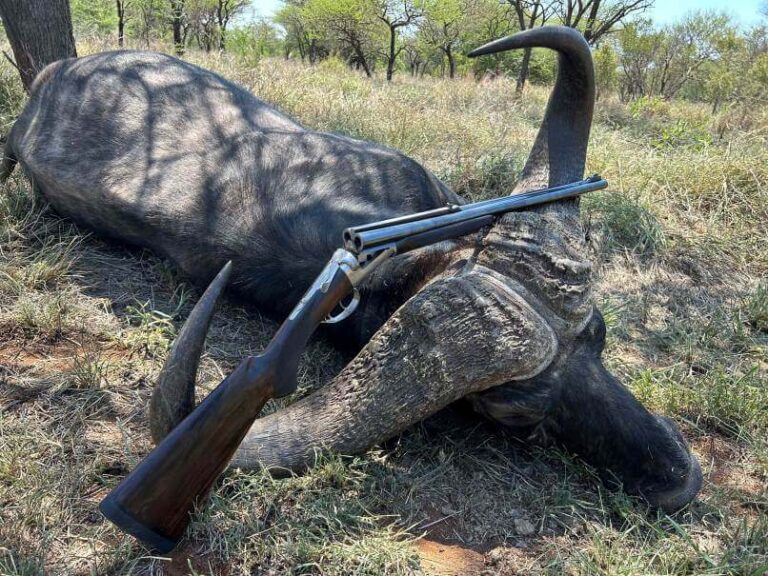For most hunters, when booking an Africa hunting trip, budgets must be considered when attempting to balance the fiscal scales of maintaining or maintaining positive cash inflows. These budget constraints filter down to travel plans, choice of game hunting safari destinations, and, of course, the target species.
Considering game hunting safaris promoting Cape buffalo hunts are for many international hunters and visitors to Africa only but a dream. Some hunters save for years to afford a once-in-a-lifetime Africa hunting trip to walk, stalk, and hunt the “Widow Maker,” also known as “Africa’s Black Death.”
Only a handful of international hunters pick a species, find a suitable hunting safari, book, and go off without concern. I often envy those so fortunate, but then I am reminded (usually by my wife) of all the blessings I already have.
When it comes to Cape buffalo hunts on the “Dark Continent,” costs can vary between the price of the available African hunts. I often get asked why there is a significant difference in the price tag.
[DYNAMIC-BLOGTABLEOFCONTENT]
African Buffalo Hunts: Price Tag Variations
When comparing African countries, the most significant differentials in the cost of the Africa hunting trip are based on, but not limited to, the following factors:
- The exact location of the concession. Land transfers may vary in length depending on the terrain. Specialized 4×4 vehicles are usually a requirement that cost dollars to maintain. Private charter planes are required in many hunting destinations, costing more than US$5,000. Remote locations also make buildings more expensive due to transport.
- Government trophy costs and levies.
- Certain African big game hunting concessions require a minimum number of days for the safari. i.e., in Zambia, Zimbabwe, and Tanzania. These extended days increase the cost per day, adding to the overall cost of the safari. In places like South Africa and Namibia, there is no set minimum for a game hunting safari, only a recommendation by outfitters. Day fees account for substantial cost contributions.
- Certain African concessions are only occupied by clients and professional hunters during the hunting season. The costs of traveling by professional hunters, outfitters, and support staff must be factored into the overall safari cost.
The chart below shows us the distribution of Cape Buffalo (also known as African Savannah Buffalo) in seven African countries. The total number of buffalo in these African countries exceeds 400,000.
Namibia is showing the least number of Cape buffalo purely because most of the country is a desert. This environment is unsuitable for Cape Buffalo to thrive in.

Reviewing the above chart clearly shows that the hunter, when considering Cape buffalo hunting packages, is spoilt with various destinations, all more than suitable for an excellent hunting adventure. All African countries produce top-class trophy Cape buffalo.
Another material reason for price variations for Cape buffalo hunts is the accommodation and lodge facilities provided by the outfitter. Like any hotel chain, we make a booking depending on what we seek as clients. We can thus book a two-star motel or a five-star with lists of additional activities.
The same applies to game hunting safaris; some hunters are happy with a safari tent, a local meal, and a cold beer at night. Other hunters may be traveling with companions that are high maintenance. They may prefer to sleep on silk sheets and watch the African sunset sipping a chilled glass of Moët & Chandon Dom Pérignon.
Cape Buffalo Hunts in Fenced Areas
There is always a debate about whether hunting free-range buffalo is better than hunting buffalo in fenced-off areas. Again, this option is also a factor when considering the cost of a Cape buffalo hunting safari in Africa. South Africa is one of many African countries with fenced-off areas, and we find similar set-ups in southern Zimbabwe and parts of Namibia.
The debate between free-range and fenced-off areas is primarily based on fair chase principles. If the ranch is externally fenced, it is assumed that the Cape buffalo cannot escape.
Having hunted fenced-off areas in South Africa for African plains game and dangerous game, fair chase applies unless:
- There are a limited number of watering holes, and animals have no option but to drink at a single water point.
- Animals are supplementary fed during the winter, and routines are established.
The hunter needs to understand one thing about trophy hunting in South Africa: these so-called “Big Five” fenced areas are enormous in size. On average, they are more than 80,000 acres. You could spend 14 days within the ranch and not even spot a herd of 500 Cape buffalo!
Hunting Cape buffalo in a fenced-off area can reduce the cost of the Africa hunting trip. Ranch owners may offer certain bulls beyond breeding age as so-called “discount hunts.”.

Many fenced-off areas are within a few hundred miles of African cities, which reduces the cost of transport, catering, repairs, maintenance, and building, thus allowing Cape Buffalo hunts to be offered at reduced rates.
The hunter can also get an idea of the size of the buffalo within the ranch. Many Cape buffalo hunts offer cull hunts for old breeding cows, which comes at less cost but no less of an experience or challenge
Cape Buffalo Hunts Options – The Choice is Yours
If money were no option and I felt like a five-star game hunting safari, I would indeed book a Cape Buffalo hunt in Tanzania and enjoy being treated like royalty for a few weeks!
However, reduced safari price options are also a consideration and offer great value for money. The actual hunt will be no less stimulating, dangerous, or rewarding. I would set aside a few additional dollars, extend my stay, and enjoy a wide variety of activities linked to tourism in the African big game hunting country of choice.
When I look at a “dagga boy” on display in a trophy room, I know that wherever the hunt took place, and at whatever financial cost, the big game hunter can tell some memorable stories!

Frequently Asked Questions: Cape Buffalo
Can you eat Cape Buffalo?
Yes, Cape Buffalo can be eaten, even those with TB, if the meat is perfectly cooked.
What is the best rifle for Cape Buffalo?
A minimum legal requirement in most African countries is a .375 caliber. Many big game hunters, when it comes to African buffalo hunts, prefer something with a little more stopping power, such as a .416 Rigby or a 500-caliber double rifle.
Where is the best place to hunt Cape Buffalo?
In this instance, the best place for Cape Buffalo hunts is a destination matching your budget.
Africa has many locations that produce top-quality Cape buffalo, from Tanzania to Niassa in Mozambique, including Zambia, South Africa, and Zimbabwe. Buffalo is also strongly represented in Uganda and the Central African Republic.
The cost of a safari hunting adventure will always be up for consideration for most members of the hunting community.
For further information about dangerous game hunting, click here. Read more about personal experiences of Cape buffalo hunts here.
Author: PC van Wyk
